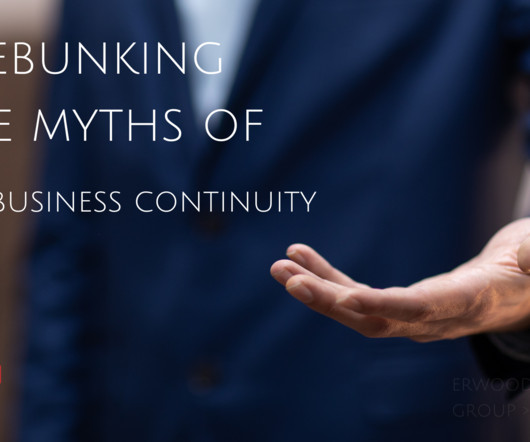BCM Basics: the Difference Between Business Continuity and Disaster Recovery
MHA Consulting
OCTOBER 5, 2023
This post is part of BCM Basics, a series of occasional, entry-level blogs on some of the key concepts in business continuity management. Sometimes the form business continuity management (BCM) is used. The activity of crisis management is also included under the umbrella though that tends to be treated separately.)















Let's personalize your content